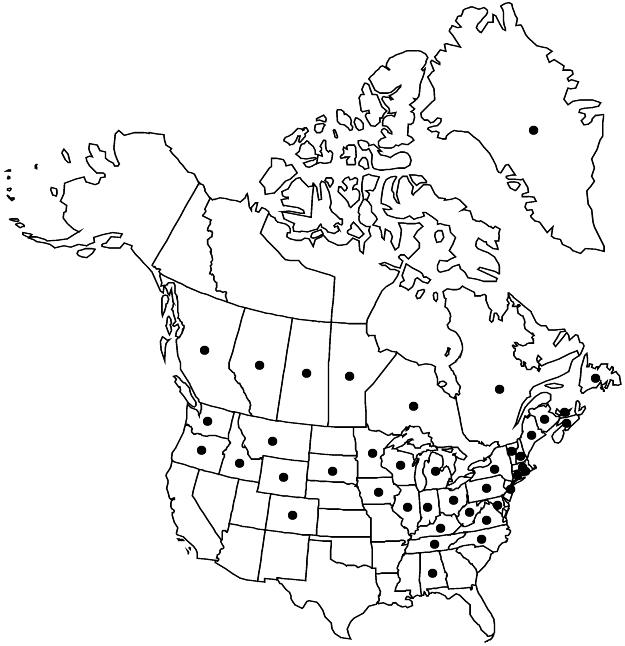Sedum acre
Sp. Pl. 1: 432. 1753 ,.
Herbs, perennial, mat-forming, glabrous. Stems trailing (nonflowering shoots ascending at tip), laxly branched, not bearing rosettes. Leaves (usually deciduous, if persistent, then blade white, soft, papery), alternate, (densely imbricate), spreading, sessile; blade yellow-green, not glaucous, triangular-ovate, terete to semiterete (elliptic in cross section), (2–)5(–8) × 1–4 mm, base obtusely short-spurred, not scarious, apex obtuse. Flowering shoots erect, usually simple, 5–10(–15) cm; leaf blades triangular-ovate, base short-spurred; offsets not formed. Inflorescences cymes, 2–12-flowered or flowers solitary, monochasially (1–)2(–3)-branched; branches not recurved, rarely forked; bracts similar to leaves, smaller. Pedicels absent or to 1 mm. Flowers 5-merous; sepals erect to spreading, distinct basally, green, oblong-ovate, unequal, 2–3 × 1.3–2.3, mm, apex obtuse; petals spreading, distinct, bright yellow, oblong-ovate to lanceolate, not carinate, 5–9 mm, apex acute to acuminate; filaments yellow; anthers yellow, (oblong); nectar scales yellowish green, square. Carpels stellately patent in fruit, distinct, yellowish. 2n = 40, 60, 80, 100, 120.
Phenology: Flowering spring.
Habitat: Rock outcrops, rock walls, calcareous habitats, disturbed sites
Elevation: 0-2400 m
Distribution

Greenland, Alta., B.C., Man., N.B., Nfld. and Labr. (Nfld.), N.S., Ont., P.E.I., Que., Sask., Ala., Colo., Conn., Idaho, Ill., Ind., Iowa, Ky., Maine, Md., Mass., Mich., Minn., Mont., N.H., N.J., N.Y., N.C., Ohio, Oreg., Pa., R.I., S.Dak., Tenn., Vt., Va., Wash., W.Va., Wis., Wyo., Europe, Asia (Turkey), n Africa, introduced in South America (Argentina, Chile).
Discussion
Sedum acre is native in Greenland. It is naturalized in North America across the northern United States and southern Canada from Quebec to North Carolina in the east and from British Columbia to Oregon in the west. Sedum elrodii was found near Somers in Flathead County, Montana. It is known only from a fragmental type specimen. R. T. Clausen (1975) considered it a naturalized form of S. acre with ovate leaf blades, basally connate petals, and procumbent and branched stems from a fleshy rootstock.
Selected References
None.